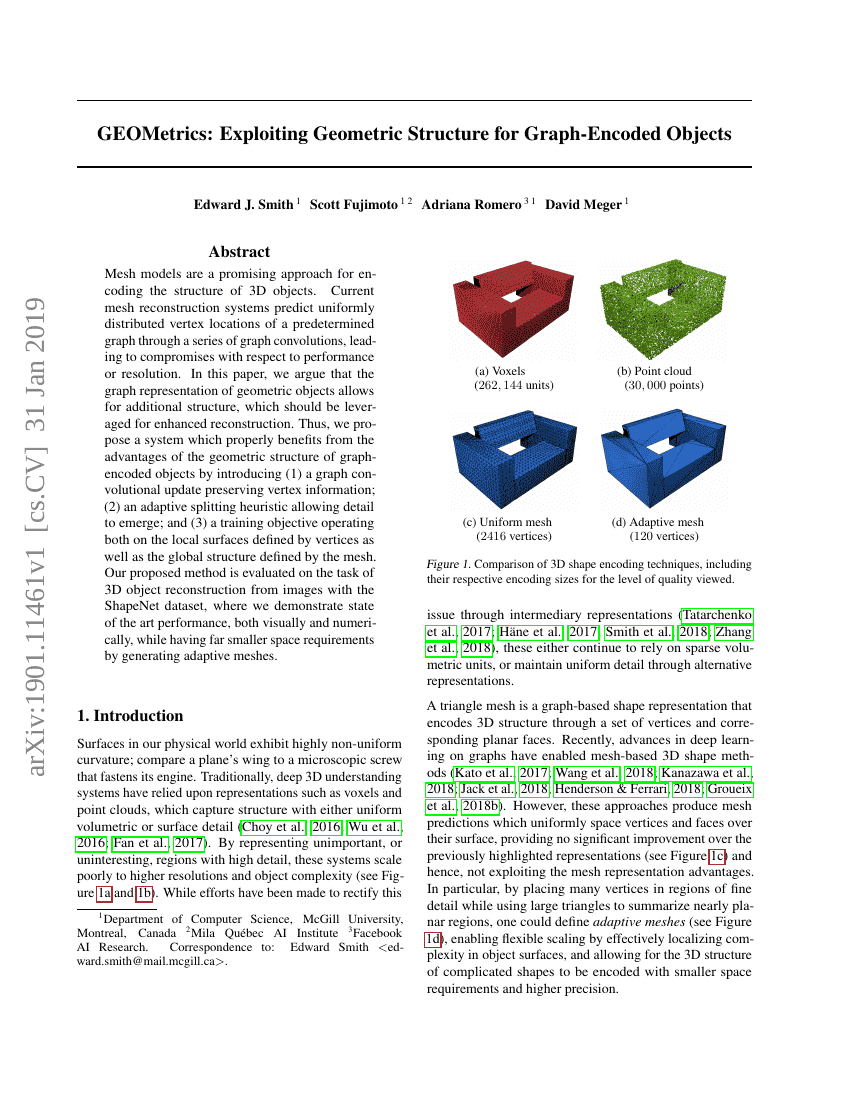Command Palette
Search for a command to run...
Edward J. Smith; Scott Fujimoto; Adriana Romero; David Meger

Abstract
Mesh models are a promising approach for encoding the structure of 3D objects. Current mesh reconstruction systems predict uniformly distributed vertex locations of a predetermined graph through a series of graph convolutions, leading to compromises with respect to performance or resolution. In this paper, we argue that the graph representation of geometric objects allows for additional structure, which should be leveraged for enhanced reconstruction. Thus, we propose a system which properly benefits from the advantages of the geometric structure of graph encoded objects by introducing (1) a graph convolutional update preserving vertex information; (2) an adaptive splitting heuristic allowing detail to emerge; and (3) a training objective operating both on the local surfaces defined by vertices as well as the global structure defined by the mesh. Our proposed method is evaluated on the task of 3D object reconstruction from images with the ShapeNet dataset, where we demonstrate state of the art performance, both visually and numerically, while having far smaller space requirements by generating adaptive meshes
Code Repositories
Benchmarks
| Benchmark | Methodology | Metrics |
|---|---|---|
| 3d-object-reconstruction-on-data3dr2n2 | GEOMetrics | Avg F1: 67.37 |
Build AI with AI
From idea to launch — accelerate your AI development with free AI co-coding, out-of-the-box environment and best price of GPUs.